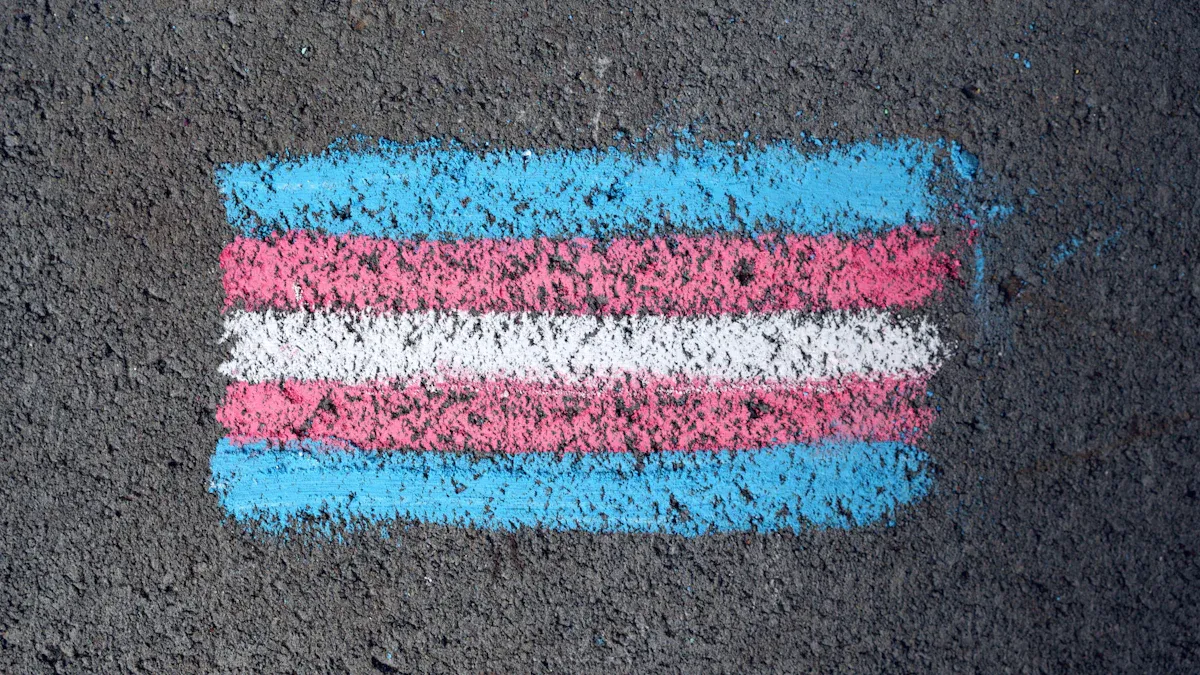AI and Transgender Representation Progress and Challenges
Explore the impact of transgender AI porn on representation, addressing biases, ethical concerns, and progress in creating inclusive AI-generated content.


Transgender representation in AI systems impacts how society views and treats individuals like you. Fair visibility matters because biased portrayals can reinforce harmful stereotypes. AI-generated adult content, including transgender AI porn, often misrepresents identities. Ethics demand that developers prioritize inclusivity and address these biases while creating AI technologies.
Current State of Transgender Representation in AI-Generated Content
Prevalence of transgender AI porn and its societal impact
The rise of transgender AI porn has significantly shaped societal perceptions of transgender people. A recent study involving 212 transgender and non-binary participants revealed a 75% increase in the popularity of the "Transgender" category on Pornhub, making it the 6th most viewed category in 2023. Despite this visibility, mainstream pornography often fails to authentically represent transgender identities. Many participants in the study reported feeling marginalized and objectified. This trend reflects broader societal attitudes, where transgender individuals face fetishization and narrow portrayals of gender and sexuality. Such depictions can harm the visibility of transgender issues and reinforce harmful stereotypes.
Issues of misrepresentation and stereotyping in AI-generated content
AI-generated content often struggles to represent transgender people accurately. Users from marginalized identities frequently report feeling underrepresented in AI outputs. Many express dissatisfaction with how their identities are depicted, citing issues like erasure and stereotyping. For example, a woman from the UK expected gender diversity in AI-generated content but found it predominantly male. This highlights a masculine default in AI systems, which can perpetuate biases and fail to reflect the diversity of transgender individuals. Misrepresentation in AI technology not only distorts public perceptions but also undermines the authenticity of transgender representation.
The role of biases in shaping transgender representation
Biases embedded in AI systems play a significant role in shaping how transgender people are portrayed. These biases often stem from the data used to train AI models, which may lack diversity or reflect societal prejudices. When AI systems generate content, they replicate these biases, leading to skewed representations of transgender individuals. This can result in harmful stereotypes, such as portraying transgender people in overly sexualized or one-dimensional ways. Addressing these biases is crucial to ensure that AI technology promotes fairness and inclusivity, rather than perpetuating existing inequalities.
Progress in Transgender Representation
Advances in inclusivity within AI-generated content
AI has started to embrace inclusivity by creating more diverse representations of transgender and gender diverse identities. Developers now recognize the importance of reflecting the full spectrum of human experiences. You can see this progress in AI-generated content that avoids outdated stereotypes. For example, some platforms now include options to customize avatars with non-binary or transgender features. These changes allow transgender people to feel seen and valued. Inclusivity in AI technology helps challenge societal norms and promotes acceptance of diverse identities.
Efforts to reduce algorithmic biases affecting transgender individuals
Reducing algorithmic biases has become a priority for many AI developers. Biases often arise from training data that lacks diversity or reflects societal prejudices. To address this, developers now use datasets that include transgender and gender diverse perspectives. They also collaborate with experts to identify and eliminate harmful patterns in AI outputs. These efforts aim to ensure that AI systems treat transgender individuals fairly. By tackling biases, you help create technology that respects all identities and reduces the risk of harm.
Examples of positive transgender representation in AI systems
Some AI systems now showcase positive transgender representation. For instance, virtual assistants and chatbots have begun to use inclusive language. This shift acknowledges the identities of transgender people and avoids reinforcing stereotypes. Additionally, AI-generated media, such as art and storytelling, increasingly highlights transgender and gender diverse characters. These examples demonstrate how technology can celebrate diversity and foster understanding. When AI systems reflect authentic identities, they contribute to a more inclusive society.
Challenges and Risks in AI-Generated Content

Ethical concerns in the creation of transgender AI porn
The creation of transgender AI porn raises significant ethical questions. You might wonder how this content impacts the identities of transgender people. AI-generated adult content often reduces transgender individuals to stereotypes, ignoring their humanity. This dehumanization can perpetuate transphobia and reinforce harmful societal norms. Additionally, the lack of consent in generating such content poses a serious ethical dilemma. Transgender people often have no control over how their identities are used, leading to feelings of violation and exploitation. Ethical AI development must prioritize the dignity and autonomy of all individuals, especially those from marginalized communities.
The impact of non-consensual deepfakes on transgender individuals
Non-consensual deepfakes represent another alarming risk for transgender individuals. These AI-generated videos can misrepresent identities, causing emotional harm and reputational damage. For transgender people, deepfakes often target their gender expression, leading to misgendering and further marginalization. In some cases, these videos have been weaponized to incite violence against transgender individuals. The misuse of this technology highlights the urgent need for stricter regulations and safeguards. You can help advocate for policies that protect vulnerable communities from the misuse of AI technologies.
Broader societal implications of biased AI systems
Biased AI systems have far-reaching consequences for society. These technologies often reinforce existing prejudices against transgender individuals. For example:
- Facial recognition software can misidentify transgender people, leading to misgendering and discrimination.
- In oppressive regimes, such technology can criminalize transgender identities, putting lives at risk.
- Research funded by organizations like the FBI has even sought to securitize trans bodies, framing them as potential threats.
These practices contribute to the oppression of transgender individuals and undermine their rights. Addressing these biases requires diverse perspectives in AI development and a commitment to ethical practices. You can play a role by supporting initiatives that promote fairness and inclusivity in technology.
Solutions and Perspectives for Improvement
Developing ethical AI systems to promote fairness
Creating ethical AI systems requires a focus on fairness and human rights. You can ensure fairness by addressing biases in training data and algorithms. Developers must prioritize the inclusion of transgender and gender diverse identities in datasets. This step helps reduce the marginalization of transgender individuals in AI-generated content. Ethical AI systems should also respect the rights of all individuals by avoiding harmful stereotypes and promoting authentic representation. When AI systems reflect diverse perspectives, they contribute to a more inclusive society and uphold the dignity of marginalized communities.
Collaborating with transgender communities for better representation
Collaboration with the transgender community is essential for improving representation in AI systems. You can involve transgender and gender diverse individuals in the development process to ensure their identities are accurately portrayed. Their perspectives provide valuable insights into the challenges they face and the solutions they need. For example, consulting with transgender people can help developers identify and eliminate biases in AI outputs. This collaboration fosters trust and ensures that AI systems respect the rights and identities of all individuals. By working together, you can create technology that celebrates diversity and promotes inclusion.
Ensuring transparency and accountability in AI development
Transparency and accountability are critical for ethical AI development. You can advocate for measures that ensure AI systems operate fairly and respect human rights. The table below highlights some key measures:
| Measure Type | Description |
|---|---|
| EU AI Act | Mandates transparency for high-risk AI systems, requiring disclosure of model characteristics. |
| Algorithmic Accountability Act | Proposed legislation in the U.S. for impact assessments of high-risk automated decision systems. |
| Explainable AI Techniques | Approaches like feature importance analysis and counterfactual explanations to enhance interpretability. |
| Ethical Black Boxes | Tools that log key events in AI operations for post-hoc investigations. |
| Algorithmic Audits | Scrutinizing AI systems to detect biases and discrimination. |
| Algorithmic Impact Assessments | Evaluating societal implications of AI systems before deployment to inform governance practices. |
These measures ensure that AI systems remain accountable and transparent. They also protect the rights of marginalized groups, including transgender individuals. By supporting these initiatives, you can help create a future where technology respects human rights and promotes fairness.
Transgender representation in AI has seen progress, but challenges remain. Ethical AI development plays a vital role in addressing biases and ensuring fairness. Advocacy and collaboration can drive inclusivity. For example, a report highlights the importance of stakeholder engagement and government guidance to enhance inclusivity in AI systems. The table below summarizes these efforts:
| Evidence Type | Description |
|---|---|
| Recommendations | Government agencies should guide AI-integrated tools to comply with the Americans with Disabilities Act. |
| Stakeholder Engagement | Collaboration among agencies and communities enhances inclusivity in AI. |
| Market Impact | Over a quarter of the population includes individuals with disabilities, showing the need for inclusive technology. |
You can support these initiatives by advocating for fair practices and engaging with diverse communities. Together, we can create a future where AI respects and uplifts all identities.
FAQ
What is the importance of accurate transgender representation in AI systems?
Accurate representation ensures that your gender identity is respected. It helps combat stereotypes and promotes understanding. This fosters a more inclusive society where every identity is valued.
How can AI developers address biases in transgender representation?
Developers can use diverse datasets and consult transgender communities. These steps ensure that AI systems reflect authentic identities and avoid perpetuating harmful stereotypes.
What role does technology play in shaping societal views on gender identity?
Technology influences how people perceive gender identity. Inclusive AI systems can challenge outdated norms and promote acceptance of diverse identities in society.
See Also
Transforming Virtual Relationships With AI Trans Girlfriend Platforms
Discovering Top NSFW AI Writers For Adult Fiction
2025's Must-See NSFW AI Character Writers To Try